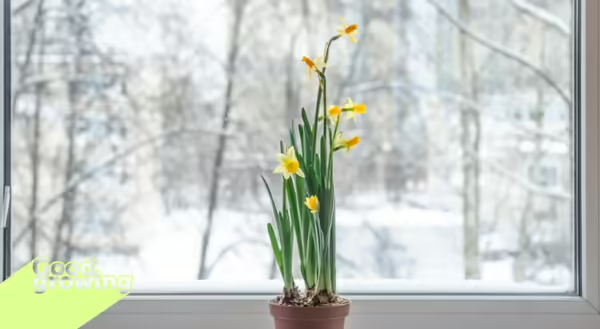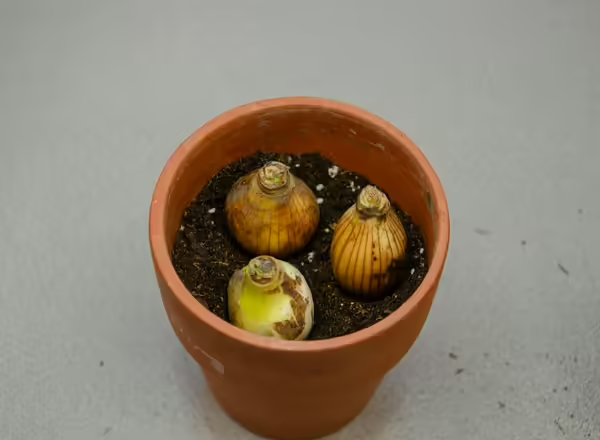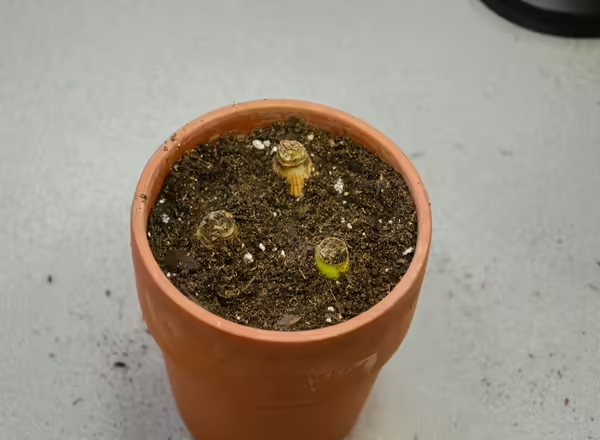
During the dreary days of winter, we often long for the colors of spring. With a little planning, we can bring those spring colors indoors by forcing flowering bulbs to bloom indoors during the colder months.
Choosing Bulbs to Force
While many different bulbs can be forced, some are easier to force than others. The most commonly and easily forced bulbs include tulips, daffodils, hyacinths, grape hyacinths, and crocus. Similar to selecting bulbs to plant outdoors, choose large, firm ones without any signs of mold or damage. Larger bulbs typically produce better flowers.
While any variety of a particular species can be forced, some may work better than others. Shorter varieties also tend to do better, because they are less likely to flop. Many catalogs and online retailers will indicate if a particular variety is good for forcing (or have entire sections dedicated to bulbs for forcing).
Forcing Bulbs
Spring-flowering bulbs require a chilling period in order to bloom properly. By mimicking these conditions, we can force bulbs to break dormancy earlier than they normally would outdoors, allowing them to bloom indoors.
Bulbs that will be forced to bloom indoors can be planted from September to November. Bulbs should be placed in containers (plastic, ceramic, etc.) with drainage holes, filled with a well-draining potting mix.
- Fill the pots with potting mix so that when the bulbs are placed in them, the tops of the bulbs are just below the top of the pot.
- Place the bulbs in the pot. Forced bulbs typically look best when they are planted densely, so plant them close together, but not touching.
- After the bulbs have been placed, fill the pot with potting mix until only the tips of the bulbs are sticking out.
- Different types of bulbs can be planted in the same pot. If using different species, larger bulbs (like tulips and daffodils) can be completely covered, and then smaller bulbs (like crocus) can be planted on top of the larger bulbs.
- Water pots once they have been filled with potting mix.
Once potted, place the containers in a cool, dark location (35-45°F) for the chilling period. This is most commonly done in a refrigerator, provided there isn’t any fruit present. Fruit, such as apples, will release ethylene gas as they ripen, which could affect flower development. Containers can also be placed in an unheated garage, as long as temperatures don’t get too cold (below 20°F).
Periodically check the pots to ensure the soil is moist and water as needed. Containers can be placed in open plastic bags to help retain water. If the bags are sealed, make sure to open them periodically to allow for air exchange.
Different species of bulbs will require varying chilling periods, but most will need between 12 and 15 weeks of chilling time. Once that time has been reached, remove the containers from their cold storage. You will likely see roots emerging from the drainage holes and shoots may have begun to form. Place the containers in a warm (50-60 °F) area with indirect light. After a few days, move them into a brighter location. Bulbs will typically bloom 2-4 weeks after they are removed from their cold storage.



Post-Bloom Care
Most people will dispose of forced bulbs after they are done blooming. If you wish to try to plant the bulbs outdoors, remove the flower stalk and leave the plants in a bright location. Once temperatures begin to warm in spring, plants can be moved outdoors, but will need to be acclimated first. Once the foliage has died back, remove the bulbs from their container and allow them to dry for a few weeks. Then store them in a cool, dry location until the fall, when they can be planted. Oftentimes, it may take 1-2 years for forced bulbs to bloom again.
Good Growing Tip of the Week: Count back 14 to 19 weeks (chilling requirement + time to bloom) from when you want your bulbs to bloom to determine when you should plant and place them in cold storage. For example, if you want flowers for Valentine's Day, this should be done by mid-October.
Bonus Good Growing Tip of the Week: Paperwhites and amaryllis are also commonly forced to bloom, particularly during the holiday season.
Want to get notified when new Good Growing posts are available? SIGN ME UP!
Give us feedback! How helpful was this information (click one): Very helpful | Somewhat helpful | Not very helpful
MEET THE AUTHOR
Ken Johnson is a Horticulture Educator with University of Illinois Extension, serving Calhoun, Cass, Greene, Morgan, and Scott counties since 2013. Ken provides horticulture programming with an emphasis on fruit and vegetable production, pest management, and beneficial insects. Through his programming, he aims to increase backyard food production and foster a greater appreciation of insects.